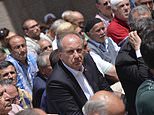[ad_1]
Honorable Charles Stewart Rolls was born August 27, 1877 and was the son of a wealthy family of British nobility. As such he could have lived the life of an Edwardian playboy. Instead, he chose to work and make significant contributions to the motoring and aero industries, both new to England at that time.
He first studied at Eton. During his time there he was very interested in engines and never hesitated to get his hands dirty working on them. This earned him the nickname of ‘dirty Rolls.’ When he was finished at Eton he signed up for a ‘crammer’ to prepare for admission to Trinity College at Cambridge. He was admitted in 1894 and started studying mechanical and applied science.
In 1896, when he turned 18, Rolls went to Paris to shop for his first automobile. He purchased a Peugeot Phaeton and joined the Auto Club of Paris. When he brought his Phaeton back to England, it became the first car in Cambridge and one of the first three cars in Wales. He obtained a B.A. from Trinity in 1898 and later earned a M.A. Upon leaving college, young Rolls worked on a steam yacht and then was employed by the London and North Western Railway in Crewe.
However, his talents and passion lay in motoring and salesmanship more than engineering. So in June of 1903, he borrowed 6,600 pounds from his father and founded one of Britain’s first car dealerships, the C.S. Rolls and Co. It was located in Fulhom and began to import French Peugeots and Belgian Minerva vehicles for sale to the British market.
Rolls was active in promoting motoring in England and joined the Self Propelled Traffic Association, an organization that campaigned against the restrictions on motor vehicles that had been imposed by the Locomotive Act. He was also a founding member of the Automobile Club of Great Britain.
It was through a friend in the Automobile club that Rolls met Henry Royce. Although Rolls preferred three or four cylinder cars, he was impressed with the two cylinder Royce 10. On December 23, 1904 the two men signed an agreement that Rolls would buy all the cars Royce could make. They would be marketed as a Rolls Royce. The very first Rolls Royce, a ten horsepower, was displayed at Paris Salon in December 1904. Then in 1906 Rolls Royce Ltd. was formed with Rolls employed as Technical Manager. The two were a perfect combination. Rolls had the capital and business sense while Royce furnished the technical expertise.
However, Rolls had also been active in promoting aviation. He was the second person in Britain to receive a pilot’s license from the Royal Aero Club. He soon became bored with automobiles and wanted to devote more time to flying so in 1909 he resigned as Technical Manager and became a non-executive director.
He bought a Wright Flyer and on June 2, 1910 set a record as the first pilot to do a non-stop double crossing of the English Channel. His flight took 95 minutes. He was killed on July 12, 1910 while flying and became the first Briton to die in an aircraft accident.
[ad_2]




